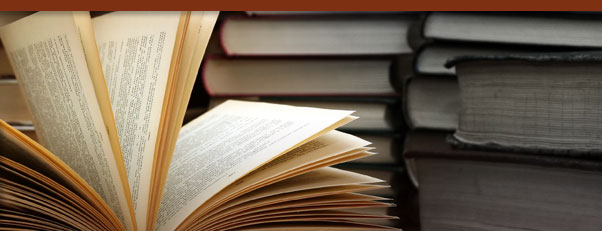| King Ashoka |
 |
Ashoka (304 BC – 232 BC), popularly known as Ashoka the Great, was an Indian emperor of the Maurya Dynasty who ruled almost all of the Indian subcontinent from 269 BC to 232 BC. One of India's greatest emperors, Ashoka reigned over most of present-day India after a number of military conquests.Along with the Edicts of Ashoka, his legend is related in the later 2nd century Asokavadana ("Narrative of Asoka") and Divyavadana ("Divine narrative"), and in the Sinhalese text Mahavamsa ("Great Chronicle").
|
Early Life- Ashoka was born to the Mauryan emperor Bindusara and his Queen 'Dharma' (although she was a Brahmin or Shubhadrangi, she was undervalued as she wasn't of royal blood). Ashoka had several elder siblings (all half-brothers from other wives of Bindusara). He had just one younger sibling, Vitthashoka (a much loved brother from the same mother). Because of his exemplary intellect and warrior skills, he was said to have been the favorite of his grandfather Chandragupta Maurya. As the legend goes, when Chandragupta Maurya left his empire for a Jain living, he threw his sword away. Ashoka found the sword and kept it, in spite of his grandfather's warning. Ashoka, in his adolescence, was rude and naughty. He was a fearsome hunter. He was a kshatriya and was given all royal military trainings and other Vedic knowledge. According to a legend, he killed a Lion with just a wooden rod. Ashoka was very well known for his sword fighting. He was very adventurous and this made him a terrific fighter. Ashoka was a frightening warrior and a heartless general. Because of this quality he was sent to destroy the riot of Avanti.
Conquest of Kalinga
While the early part of Ashoka's reign was apparently quite bloodthirsty, he became a follower of the Buddha's teaching after his conquest of Kalinga (India) on the east coast of India in the present-day state of Orissa. Kalinga was a state that prided itself on its sovereignty and democracy. With its monarchical parliamentary democracy it was quite an exception in ancient Bharata where there existed the concept of Rajdharma. Rajdharma means the duty of the rulers, which was intrinsically entwined with the concept of bravery and Kshatriya dharma.
The pretext for the start of the Kalinga War (265 BC or 263 BC) is uncertain. One of Susima's brothers might have fled to Kalinga and found official refuge there. This enraged Ashoka immensely. He was advised by his ministers to attack Kalinga for this act of treachery. Ashoka then asked Kalinga's royalty to submit before his supremacy. When they defied this diktat, Ashoka sent one of his generals to Kalinga to make them submit.
The general and his forces were, however, completely routed through the skilled tact of Kalinga's commander-in-chief. Ashoka, baffled at this defeat, attacked with the greatest invasion ever recorded in Indian history until then. Kalinga put up a stiff resistance, but they were no match for Ashoka's brutal strength. The whole of Kalinga was plundered and destroyed. Ashoka's later edicts state that about 100,000 people were killed on the Kalinga side and 10,000 from Ashoka's army. Thousands of men and women were deported.
Death and legacy
When India gained independence from the British Empire it adopted Ashoka's emblem for its own, placing the Dharmachakra (The Wheel of Righteous Duty) that crowned his many columns on the flag of the newly independent state. In 1992, Ashoka was ranked #53 on Michael H. Hart's list of the most influential figures in history. In 2001, a semi-fictionalized portrayal of Ashoka's life was produced as a motion picture under the title Asoka. King Ashoka, the third monarch of the Indian Mauryan dynasty, has come to be regarded as one of the most exemplary rulers in world history. The British historian H.G. Wells has written: "Amidst the tens of thousands of names of monarchs that crowd the columns of history ... the name of Asoka shines, and shines almost alone, a star."
Ashoka Chakra
The Ashoka Chakra (the wheel of Ashok the Great) is a depiction of the Dharmachakra or Dhammachakka in Pali, the Wheel of Dharma (Sanskrit: Chakra means wheel). The wheel has 24 spokes. The Ashoka Chakra has been widely inscribed on many relics of the Mauryan Emperor, most prominent among which is the Lion Capital of Sarnath and The Ashoka Pillar. The most visible use of the Ashoka Chakra today is at the centre of the National flag of the Republic of India (adopted on 22 July 1947), where it is rendered in a Navy-blue color on a White background, by replacing the symbol of Charkha (Spinning wheel) of the pre-independence versions of the flag. Ashoka Chakra can also been seen on the base of Lion Capital of Ashoka which has been adopted as the National Emblem of India.
The Ashoka chakra was built by Ashoka during his reign. Chakra is a Sanskrit word which also means cycle or self repeating process. The process it signifies is the cycle of time as how the world changes with time. The horse means accuracy and speed while the bull means hardwork.
References - http://en.wikipedia.org/wiki/Ashoka
|
|
|
 |
January 23th, 10
Ravi Shankar (Bengali: born 7 April 1920), often referred to by the title Pandit, is an Indian sitarist and composer. He has been described as the most well known contemporary Indian musician by....
• read more |
 |
January 23th, 10
Muhammad Ali (born Cassius Marcellus Clay, Jr. on January 17, 1942) is a muhammad aliretired American boxer. In 1999, Ali was crowned "Sportsman of the Century" by Sports Illustrated.
• read more |
| |
|








